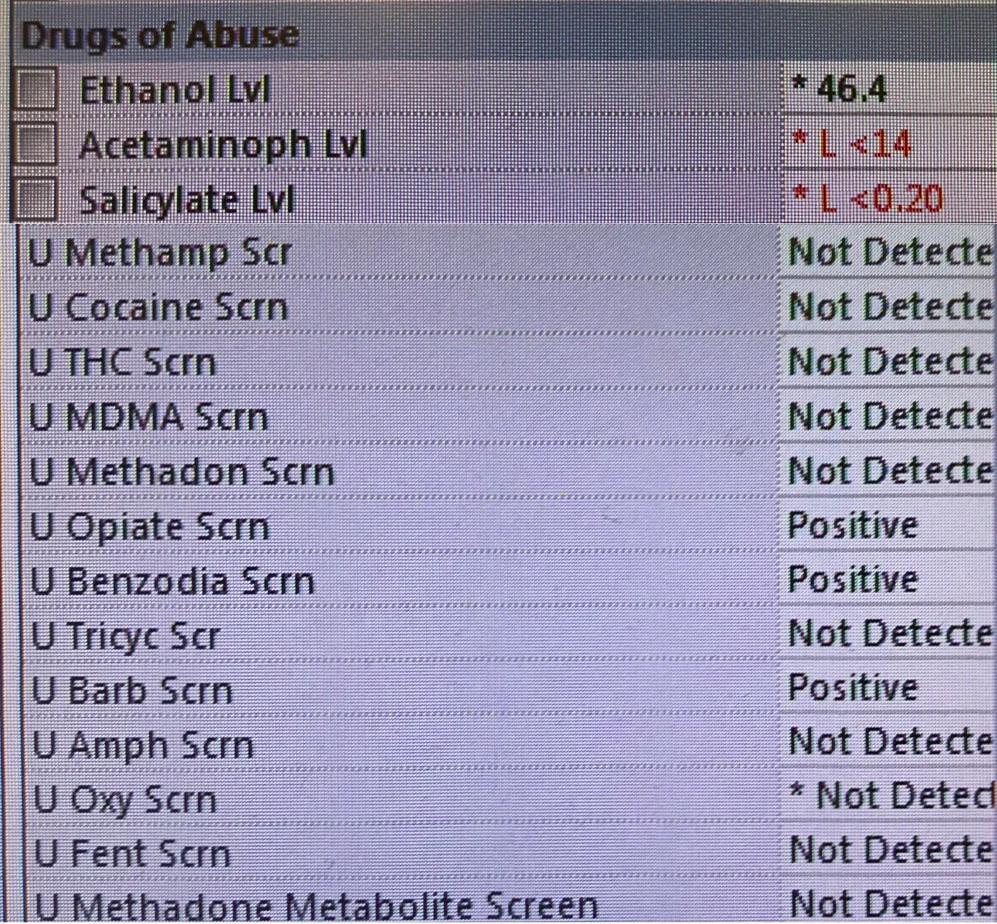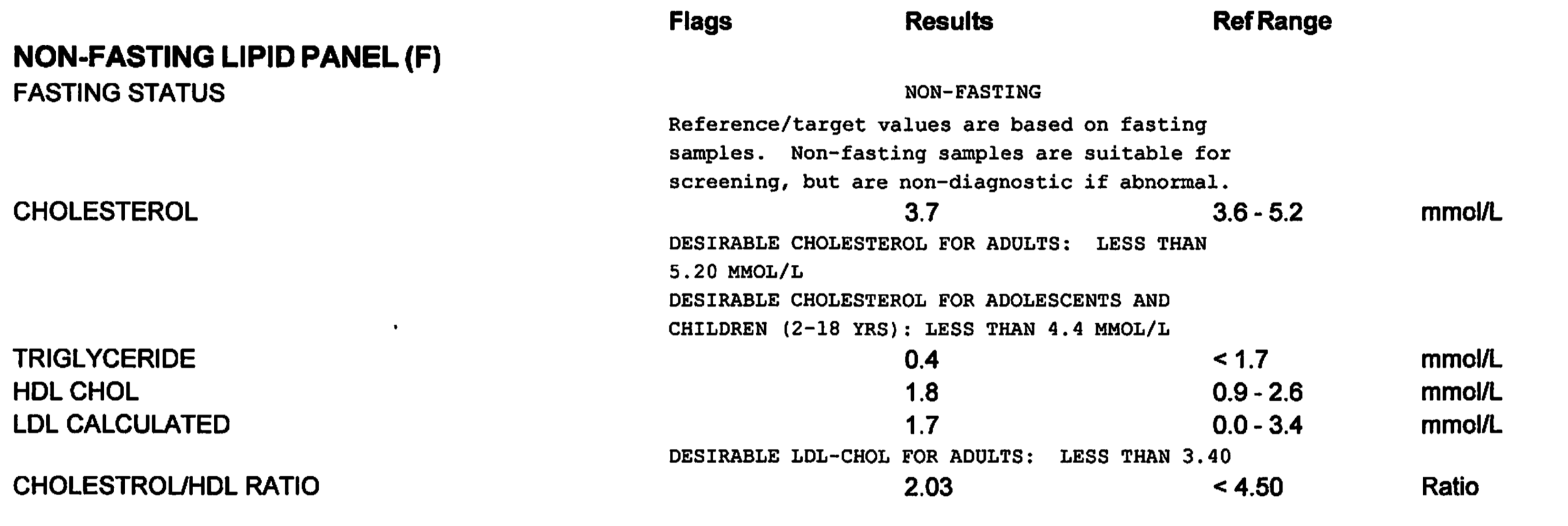Flag Abnormal Lab Results: Why & Difficulties.
This is Part 2 on displaying Lab results. It discusses background on the importance of flagging lab results and why this sometimes fails.
Part 1 - shows how lab results without a 'range of normal' need to be flagged different than normal results. Or they can be missed.
Part 2: Flagging abnormal lab results
An aside on language
Labs often will display the "Reference Range". But then they use markers such as "N" to indicate 'normal'. There is a bit of double speak here. The lab doesn't want to say they are providing the 'range of normal', because that may not be 'normal' for the many reasons discussed in this article. However, at the same time, they are using the word 'normal' to discuss the lab value in relation to the range.
Flags: for paper results
On lab printouts, labs that are abnormal are indicated with a mark. There is often an empty column with marks identifying which rows contain abnormal bloodwork results.
The mark may be an asterisk, or an "H" for high or "L" for low or "A" for abnormal.
In this printout, normal results are indicated with an "N". Results outside the range of normal have an "A".
Flags: in electronic health records
On computers, abnormal labs may be display in a different color from the rest. Such as blue or red. Sometimes the 'cell' that contains the abnormal result is a different color. Sometimes arrows try to indicate that a lab is 'further' outside the reference range.
This Na is a bit outside the range of normal
The role of abnormal lab flags
Abnormal flags play a key role in reviewing lab results.
First, the abnormal flag helps remind the physician that that result is outside of the reference range. Physicians do not have memorized the reference range (typically aka the range of normal) for every lab test.
Second, flagging results as outside the reference range help alert physicians without experience interpreting that lab result that it may require further action and follow up.
Third, for some tests the reference range changes based on the lab assay being used. Therefore the abnormal flag is an important safety check to help alert physicians that the resulted lab is outside that lab's reference range.
Fourth, the flag act as a visual trigger to direct attention to results that require careful attention and prevent them from being overlooked. This is particularly important as a typical physician office may receive thousand of lab results on a daily basis. Flags play a crucial role in ensuring abnormal results do not get missed.
Fifth, internists in particular like to review large volumes of patient's past data displaying thousands of data points at once. Abnormal flags help cue in our attention on this data map.
Sixth, in creating automated computer protocols to ensure that critical results are escalated and dealt with properly, accurate and reliable abnormal flags must exist. Similarly, the absence of reference range and abnormal flags for on some tests must be accounted for.
Why abnormal results fail to be flagged
Results may fail to be flagged as abnormal either because
A. The reference range is not entered into the system.
B. The reference range is incorrect
Both of these situations will lead results to be displayed as 'normal', seating opportunity for being overlooked.
A. No range of normal in the lab system
This is reviewed in Part 1.
B. Incorrect range of normal
The range of normal listed on the labs for some results are derived from population means, etc, etc. But often these do not apply to the patient. What it means to be 'incorrect' for that patient gets a bit complicated. Stay with me here. A few examples...
e.g. Influenced by patient factors
Often crucial lab tests can only be interpreted based on the patient's health history and the current treatment guidelines. For instance, although the reference range provided by this lab suggests an LDL of under 3.4 is within the 'reference range', in fact if you live in Canada and have an LDL of 2.5 with a past history of myocardial infarction, your target LDL should be under 2.0. For that patient, the LDL would need a flag if it is above 2.0. The 'normal range' is entirely contingent upon multiple patient factors. In another situation an LDL of 3.4 may be acceptable for the patient, and no flag is required.
Displaying 'reference ranges' on lab tests that are actually much more complicated as their interpretation may falsely reassure some clinicians that certain labs are 'normal' when in fact they are not.
This lab goes out of their way to display a LDL range of normal, that is in fact NOT normal for many adults. This lab also includes an 'old' warning about 'fasting status' which is not consistent with current Canadian Lipid guidelines.
e.g. Influence by medications
For a patient with atrial fibrillation on warfarin their 'normal' INR should be 2.0 to 3.0. Sounds simple, just add a line 'on warfarin' to the labs to indicate this. But what if in fact they are on warfarin for a mechanical mitral valve rather than atrial fibrilatlion, their target actually is an INR of 2.5 to 3.5. Or what if they were on warfarin, and then incurred a thrombosis, and their hematologist increased their target INR dose. Hmm, now its getting tricky. How does the lab now when to flag this as 'abnormal'. I guess it will just default to always flagging it with the 'physiologic' reference range...although the purpose of checking this lab is to check if the patient is at 'target' not as 'normal physiologic' level.
Now, the problem is, if the software gets reprogrammed so that results outside of 2.0 to 3.0 are flagged as 'abnormal' for a particular patient, another physician may come along and fail to realize the patient's INR is elevated prior to performing a procedure. What the 'normal range' should be set to is tricky.
It seems in fact that TWO flags would be better in this case. On flag that the lab is 'above physiologic level', and a different flag if it is 'at target / normal / within range' for that specific patient.
But as current systems likely are unable to account for this, perhaps a simple cop out is to flag it with a third symbol / color that indicates that this lab does not have an attached 'normal range', and therefore that value should be directly inspected rather than only categorized into normal or abnormal.
e.g. The reference range is not necessarily the safe range
As mentioned, part of the reason for providing reference ranges is to help assist clinicians who are not as familiar with the reported lab value, and if the result requires 'follow up' or 'further attention' because it is outside the reference range.
The Digoxin Level for instance is often reported as 'normal' if it is under 2.0 ng/ml (under 2.6 nmol/L). However, in reality a level only half of that is generally considered safe.
In this case the digoxin level provided on the reference range is not actually within the safe range. Furthermore, the reference range doesn't account for the patient's specific condition as digoxin in reduced ejection fraction is titrated to a target dose of 0.5 to 0.8 ng/mL (0.65 to 1 nmol/L), whereas digoxin for ventricular rate control is titrated to heart rate without exceeding the safe range.
Issues not addressed, yet.
- what type of symbol / marking / style to use on printout labs to indicate normal, abnormal, normal range not reported
- what type of symbol / marking / style to use on electronic labs to indicate normal, abnormal, normal range not reported
- ways to flag changes in lab results from prior values
- ways to flag lab results that are derived from other lab data using calculation. e.g. Sodium correct for glucose, anion Gap, Tsat, Osmolar gap, etc.
- Displaying the collection time to processing time of lab work. In particular as it applies to venous & arterial blood gases, as well as hemolysis investigations.
Have you read part 1? It shows how lab results without a 'range of normal' need to be flagged different than normal results. Or they can be missed.






